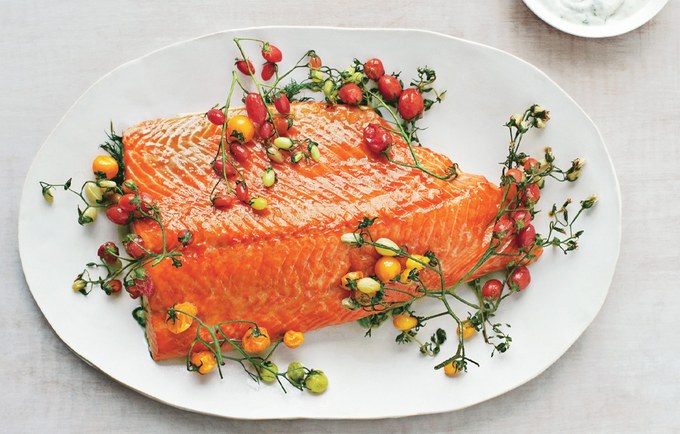Welcome to the final installment in our series on Wild Pacific Salmon. There are five species of salmon in the cold, clean waters around Alaska, today we will discuss our customers’ all time favorite, Sockeye Salmon.
Well traveled, Sockeye Salmon spend their time in salt water swimming and feeding in the Alaska Gyre in the Gulf of Alaska before returning to their natal streams to spawn. They hatch and live in fresh water for 1-4 years and then spend 3 years in the open ocean.
Wild Alaska Sockeye Salmon are well known for the brilliant red hue their fllets possess both raw and cooked. This is due to their natural diet of krill and plankton which contain a carotenoid pigment called astaxanthin. This powerful compound not only provides a deep color and strong (not fishy) flavor, but also is an antioxidant, may help prevent cancer, promotes skin and heart health, and can alleviate joint pain. A 3 ounce cooked portion of sockeye salmon contains 23 grams of protein, 3.8 micrograms of vitamin B12, 14.2 micrograms of vitamin D and a whopping 730 milligrams of the omega 3’s DHA and EPA. These essential fatty acids are the most studied, beneficial, and readily usable fats for the body. Salmon, by far, contains more DHA & EPA than any other source.
This firm, robust and vividly colored fish has a high oil content and is a perfect star of the plate when prepared by baking, broiling, grilling, poaching, sautéing, smoking, sushi/sashimi, roasting or steaming.
If you’d like to review the first two parts of this series (including recipes) check here:
Although we’ve offered all five species, we currently have Sockeye and Coho Salmon in stock. While we aren’t planning extended features on two other salmon, they are worth brief mention here.
King, or Chinook Salmon, is the largest and least abundant of the Wild Pacific Salmon with the longest lifecycle in the open ocean. Most kings are troll caught in southeast Alaska. The first Copper River King Salmon of 2022 was about 10 pounds and sold at Pike Place Market in Seattle last month for just over $900. The Alaska Department of Fish & Game’s 2022 salmon forecast anticipates a return of approximately 310,000 King Salmon statewide.
Pink Salmon is the smallest and most abundant of the Wild Pacific Salmon species. Typically, the returns are larger in odd numbered years. The 2022 forecast calls for a total return of approximately 67.2 million fish, lower than in 2021. As Pink Salmon is the most bio-abundant, most are canned and not as easy to find fresh or frozen. We recommend canned Wild Pink Salmon over fresh farmed salmon any day of the week.
Overall salmon forecasts for 2022 call for a total commercial harvest of 160.6 million salmon (all species). A record Sockeye Salmon harvest of 74 million fish is anticipated and the Coho and Keta returns are projected to be average.
Alaska Sockeye Salmon with Red Chile Honey Glaze
Ingredients:
1/2 cup honey
3-4 tablespoons red chile sauce
1.5 pounds Alaska Sockeye Salmon
Sea salt and pepper, to taste
1 lime
Instructions:
1. Make the glaze by stirring red chile sauce and honey in a small bowl until well combined. Store in refrigerator for up to 2 weeks.
2. Prepare the salmon for grilling by removing the salmon from the refrigerator 15 minutes before cooking. Heat grill to 375F. Season salmon with salt and pepper.
3. Grill the salmon by lightly coating preheated grill with olive oil. Carefully place salmon skin side down to the center of the grill. Close grill cover and cook for 5 minutes.
4. Glaze the salmon, finish grilling, and serve by spreading the glaze on the salmon filets evenly. Close grill and continue to cook about 5-7 minutes more. Cook just until fish is lightly translucent in the center – it will finish cooking from retained heat. Remove from grill and let rest a few minutes before serving. Garnish with lime zest and serve with lime wedges.
Variation: Salmon can also be roasted in an oven preheated to 375F or pan-seared and finished in the oven. Cook just until lightly translucent in the center; be sure to let salmon rest a few minutes before serving.
Enjoy,
Brenna & Kenny
